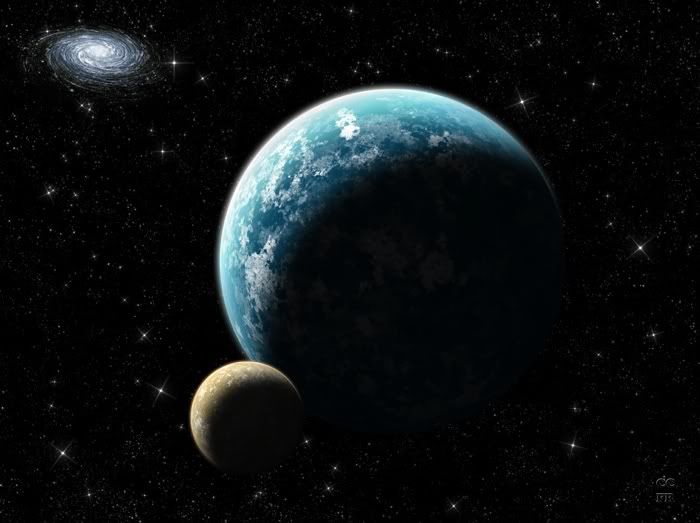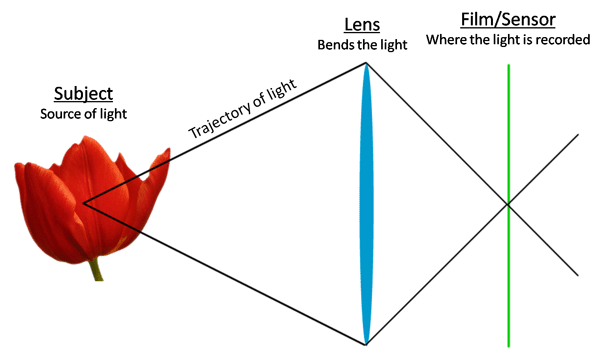“I went into a clothing store, and the lady asked me what size I was. I said, ‘Actual’. I’m not to scale.” -Demitri Martin
When you look out at the Universe, what you can see is limited, at the most fundamental level, by the size of what you look with. This is why you can see dimmer objects at night — when your pupils are dilated — than you can when your pupils are constricted.
This same principle that applies to your eyes applies to telescopes as well. As telescopes have grown in size, so has our ability to see deeper into the Universe, as we can collect more light and view dimmer, fainter objects. Things that would have appeared imperceptible to us with less sophisticated equipment suddenly explode into view, brilliant and distinct.
In fact, as a consequence of telescopes getting larger, we can not only see deeper and farther, we can also see with higher resolution! These dim objects not only become visible to us, they also come into focus.
The reason for this? Astronomically, the resolution you can see with is determined by how many wavelengths of the light you’re looking at can fit across your telescope! Scientifically, this is known as the Rayleigh Criterion, and it basically tells you that every time you double the diameter of your telescope, you not only quadruple your light-gathering power, you also double your resolving power.
Or, if you want to double your resolving power without building a telescope twice as large, you can look at shorter wavelengths of light!
The shorter the wavelength of your light, the tinier the imperfections in your surface are allowed to be. For a gamma-ray telescope, the highest quality optics are demanded, while with a radio telescope, tremendous dishes (or arrays of dishes) are required to obtain even modest resolution, but the optical quality can be fairly lax. If the size of your telescope is fixed, wavelength is everything for determining resolution.
But if you’re determined to use a particular wavelength of light, then the converse is true: size is everything. For human beings, we’ve used visible light for far longer than we’ve had telescopes, and so that has a fixed wavelength. You want to get better at it? You build a bigger telescope. And for some time, that’s been exactly what we’ve been doing.

Image credit: NASA, with the 2.4-meter diameter HST mirror and JWST's segmented 6.5-meter diameter optics.
While space has been the best environment for achieving these maximal resolutions, recent advances have allowed ground-based telescopes, despite having to contend with atmospheric distortion, to catch up. Most recently the 8-meter, ground-based Gemini Telescope has revolutionized adaptive optics so significantly that, for the first time, a ground based telescope has defeated the optical resolution of Hubble!
Well, if size is everything for optical resolution, the largest telescopes in the world — the 10-meter class giants — are about to have their hats handed to them. A new record-breaker, or I should say record-demolisher, was just approved by the European Southern Observatory consortium.
And, I promise you, you’ve never seen anything like it.
Sure, it may look like any giant, isolated telescope on the top of a high desert mountain, where the air is thin and rarefied, the skies are clear, and light pollution is virtually nil. But looks can be deceiving; this telescope is unique in all the world.
You’ve never seen this before: an observatory that’s literally the size of a football stadium! (Or, equivalently, a fútbol stadium.) But it’s the telescope inside — with a set of primary optics nearly 40 meters in diameter — that shatters all the records. Unlike Hubble’s single mirror, which is a bit larger than a human, or James Webb’s segmented design, with a honeycomb of 18 human-sized mirrors, this new telescope features a primary mirror made of 798 segments, each 1.4 meters across.
For a cost of just over 1 billion Euros (it is an ESO project, after all), the European Extremely Large Telescope (E-ELT) will become the world’s largest eye on the sky. How much larger and how much more power will it have? In fact, the E-ELT will gather more light than all of the existing 8–10-metre class telescopes on the planet, combined.
But the first thing to be built won’t be even one of these giant segments; the first thing to begin construction will be the adaptive optics system; one of the most challenging bits. Remember how adaptive optics works?
You take what you see through the atmosphere — distortions and all — and, by focusing in on a “guide star” (or series of guide stars) whose properties are known, you build an “adaptive mirror” that literally un-blurs the image for you!
But how do you make a fluid-like mirror that can adapt in real-time to the changing atmospheric distortions? It isn’t that the mirror itself is fluid, it’s that it’s thin enough that it can be mounted on an electronically-adaptive system!
The flat mirror that rests upon this apparatus will be about 2.5 metres in diameter but just 2 millimetres thick, allowing it to be deformed like a flexible film. More than five thousand voice-coil actuators will flex the shape of the reflecting surface of the mirror up to a thousand times per second, precisely canceling out the distorting effect of the atmosphere. (See here for more details.)
The result is an adaptive mirror that gives us a final image that’s comparable to what we’d get from a space telescope, except getting a 40-meter-diameter telescope in space is a pipe dream at this point!
While a whole slew of revolutionary science will come out of this, including measurement of the first stars, the earliest galaxies, and unprecedented high-resolution imaging of pretty much anything you can imagine, the biggest victory will go to those on the hunt for exoplanets. Because with this new E-ELT, we’ll be able to directly image exoplanets as small as Earth around stars many hundreds of light-years away.
In just a generation, we’ll go from knowing just one star with exoplanets around it to direct imaging of thousands of Earth-sized (and possibly Earth-like) worlds around distant stars.
This is why we invest in science; this is what we can achieve.



















